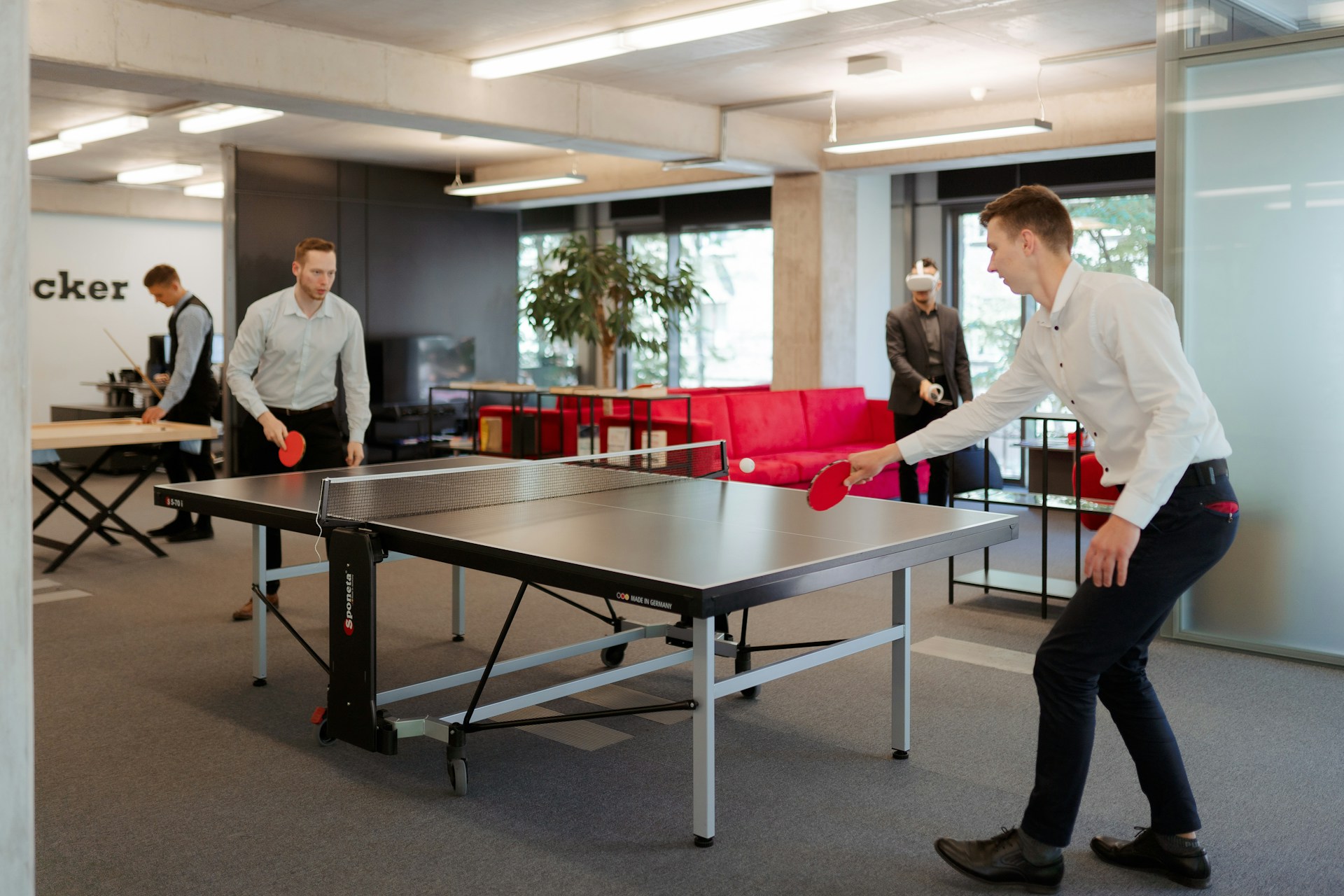July 12th 2024
Since the return to the office post-pandemic, there’s a growing understanding that workers resent this inevitable step. People felt like their work-life balance drastically improved when working from home and being able to manage their own time. Nowadays, people come into the office (mostly) because it’s required of them by their employer.
EuroNews reported on a survey done by Checkr which explored both employee and business leaders’ attitudes towards return-to-office mandates and concluded “the results showed that 56 per cent of managers see red flags if employees are passionately against returning to the office––while only 38 per cent of employees feel the same way. This signals that there could be a growing gap in Europe between management and employee attitudes towards returning to the office.”
While the stats may indicate that a healthy amount employees are against returning to the office full-time, there are steps you can take as a business owner to incentivise employees to return and create a true sense of belonging for your employees.
We’re going to explore all of that today!
Importance of Community-Building
When people feel like they belong to something bigger than themselves, they cherish it. Workplaces today don’t have to look and feel like the drab, old, cubicle-filled hellscapes of the 80s and 90s. Those times are far, far behind us. Modern offices have the space and resources available to allow employees to spread their wings and work in the best way that suits their style.
When people collaborate in a space that they enjoy spending time in, it creates a sense of community and a bond that goes beyond the 9-5. People like to feel included and part of the conversation, so fostering that sense of community in your workplace can have huge benefits to your business in the long term.
You may want to consider team-building exercises in the workplace as a starting point, as these can massively improve employee engagement and fulfilment at work. They can also help your employee retention numbers too, as people feel more a part of the team, work harder because of it, and stick around for much longer.

Types of Office Activities to Consider
There are lots of ways to get your team involved and working together, many of which can be done right there in your office. Office activities don’t just have to be limited to the workplace, though. Some activities can see you venturing out into the world with your team, to take on physical challenges, have idyllic short breaks, or even do some social good in the community.
Let’s explore what some of these activities might look like, to give you a better understanding.
In-Office Activities
- Team-building workshops: Gathering your team and undertaking a set list of short activities such as quizzes, puzzles, and things that require multiple levels of cooperation.
- Informal department meetings: For the heads of departments, engaging in informal talks about the direction and goals of the company, where no question or answer can be wrong.
- Brainstorming sessions: For the whole team, pooling mental resources and devising ideas and plans for the future.
Out-of-Office Activities
- Planning a Team Offsite Day: Take your team outside of the office walls for a fun and engaging day of activities, boosting morale and enthusiasm.
- A short break away: Allow your employees to let their hair down for a short weekend away to the country, paid for by the company.
- Volunteering and social good: Get the team engaging in something that benefits their community, such as litter-picking, delivering food to food shelters or helping those less fortunate in any way they can.

Strategies for Inclusivity
When it comes to planning events either inside or outside of the office, it’s key to understand the likes and dislikes of your team. Some people may be more physically able, and others not so much.
Inclusivity is incredibly important nowadays, as a wealth of knowledge from many different backgrounds can offer so much to your business. You want your employees to feel seen and included at all times, and it’s down to you to do the research before setting any plans in stone.
You could pool each employee suggestion into groups such as physically demanding activities (workouts, yoga, hikes/walks etc.), mentally demanding activities (quizzes, puzzles etc.), fun/games, and if food or drink is involved, making sure there are vegetarian/vegan and non-alcoholic options available too.
Always be aware of not only the needs of your employees, but their wants also. Some people may be introverts in the workplace and take time to come out of their shell, so factor this in whilst planning.

Measurable Outcomes
After each activity you put on, you’ll need to know if they’re actually working to create a sense of belonging within your team. You’ll need ways to measure this in cold, hard data.
Some of the best ways to evaluate this are to conduct anonymous employee surveys after the fact, as well as keeping an eye on attendance rates. Making these activities mandatory will dampen any excitement, so keep invitations open and on a want-to-be-there basis.
Send out a survey after the activity asking for feedback on how they felt during and after, whether they feel closer to anyone on their team, and whether they’d like to take part again in the future.
Over time, if the activity went well and everyone seemed happy, you’ll likely see attendance rates increase as word spreads around the office, so don’t be disheartened if the first session or two isn’t full to the brim.

Practical Tips and Real-World Examples
When planning an activity, it’s a good idea to thoroughly explore all options and suggestions before settling on one. It would make sense for the majority opinion to win out each time but ensure you’re considering the smaller voices on the team too.
Switch it up each time! It could start to get stale if the same (or similar) activity is picked each time, so rotating between different types of activities for the group would be a great way to keep things fresh. One instance could be a fun, laid-back time where games are played to loosen everyone up and get everyone involved. The next time could entail doing something rewarding in the community, just the like team over at Microsoft did!
The team at Microsoft engaged in a team-building activity that saw them doing some social good by helping to donate lots of food to their community food bank. This was called ‘End-Hunger Games’ and massively helped the people in their community who needed it the most.
This is a fantastic example of a team-building exercise that not only does something great, but also helps to create a sense of belonging and bond between the people on the team. Doing good to feel good.

It’s important that you, as a business owner, make coming back into the office a welcomed step for your employees. Through a whole host of different activities, you can boost morale and strengthen the bond between workers, so that in the long run, they feel enthusiastic about the return. Workshops, team-building, and general fun are always great ways to do this, by creating meaningful moments that they’ll remember and cherish for years to come.
If you need more space in your current office to put on even bigger and better events for your team, head over and take a look at our serviced office spaces today, and use Click Offices’ free office search tool to find amazing offices in your area today.
